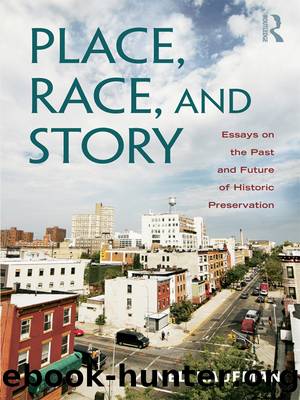Place, Race, and Story by Kaufman Ned;

Author:Kaufman, Ned;
Language: eng
Format: epub
Publisher: Taylor & Francis Group
Published: 2011-02-01T00:00:00+00:00
THE INSTITUTIONS
In 1820, the new buildings of the Ãcole des Beaux-Arts, designed by François Debret (and later completed to designs by Felix Duban), began to rise on the site of the old convent of the Petits Augustins, latterly the Musée des Monuments Français. Legally, the museumâs collections had reverted to their original owners. But many pieces were never claimed and survived instead in inspiring disorder around the rooms and courtyards of the old museum. Duban featured the largest of them, the facades from Anet and Gaillon, in his design; others were incorporated in trophy-like arrangements in niches and archways. In many ways, the Ãcole des Beaux-Arts was the natural successor to Lenoirâs museum; it even formed its own cast and fragment collection. Yet it conveyed a quite different mood from that of its predecessors. The bland lighting of its central court, roofed over with a magnificent skylight in 1863, was the very opposite of Lenoirâs stained-glass effulgence, or of Soaneâs disquieting shadows; ranks of graceful statues seemed by their very orderliness to rebuke the passionate confusion of those earlier collections. In short, the Ãcole des Beaux-Arts had institutionalized the collecting and display of architectural fragments.
The process of institutionalization that led from Lenoir to the Ãcole can be traced even more clearly in one of Englandâs most important cast collections, that of the architect Lewis Nockalls Cottingham. Cottingham, a leading scholar and restorer of medieval churches, had begun to collect casts and fragments of medieval and Elizabethan architecture by 1815, and in 1825 he installed them in a house specially designed for the purpose. To some extent, this was certainly done in emulation of Soane. Yet his collection differed significantly from Soaneâs in that it concentrated on medieval and Elizabethan architecture. In any case, the house and its collection soon became famous among architects, and, when Cottingham died in 1847, architects worried publicly about their future.
One reason for the widespread concern over the fate of Cottinghamâs collection is that it had become tied up with a larger issue, the rise of medievalism. The classicizing slant of most public institutions was becoming irksome to architects, and Cottinghamâs collection was seen as an essential counterweight. Already in 1838, Cottinghamâs former apprentice, the architect Edward Buckton Lamb, had advanced a proposal to turn underutilized cathedral naves into local museums of medieval architecture.32 Four years later, he was calling upon the trustees of the British Museum to devote space to a âClassification of Gothic Architecture,â a proposal which was met with polite indifference.33 The museum establishment was not ready to place Gothic on an equal footing with classical. But the architectural profession was.
In 1851, the prominent architect Sir George Gilbert Scott spearheaded a move to establish an educational museum and school of art whose collections would consist of architectural models, plaster casts, and actual fragments of medieval architecture.34 Scott raised funds for the museum, contributed his own collection of casts, persuaded Ruskin and others to do likewise, and secured the bulk of Cottinghamâs private museum.
Download
This site does not store any files on its server. We only index and link to content provided by other sites. Please contact the content providers to delete copyright contents if any and email us, we'll remove relevant links or contents immediately.
Kathy Andrews Collection by Kathy Andrews(10554)
The remains of the day by Kazuo Ishiguro(7577)
Spare by Prince Harry The Duke of Sussex(4222)
Paper Towns by Green John(4178)
The Body: A Guide for Occupants by Bill Bryson(3817)
Be in a Treehouse by Pete Nelson(3234)
Harry Potter and the Goblet Of Fire by J.K. Rowling(3079)
Goodbye Paradise(2978)
Never by Ken Follett(2910)
Into Thin Air by Jon Krakauer(2711)
The Remains of the Day by Kazuo Ishiguro(2627)
The Genius of Japanese Carpentry by Azby Brown(2616)
The Cellar by Natasha Preston(2605)
Drawing Shortcuts: Developing Quick Drawing Skills Using Today's Technology by Leggitt Jim(2537)
120 Days of Sodom by Marquis de Sade(2446)
Architecture 101 by Nicole Bridge(2356)
Machine Learning at Scale with H2O by Gregory Keys | David Whiting(2319)
The Man Who Died Twice by Richard Osman(2310)
Industrial Automation from Scratch: A hands-on guide to using sensors, actuators, PLCs, HMIs, and SCADA to automate industrial processes by Olushola Akande(2129)
